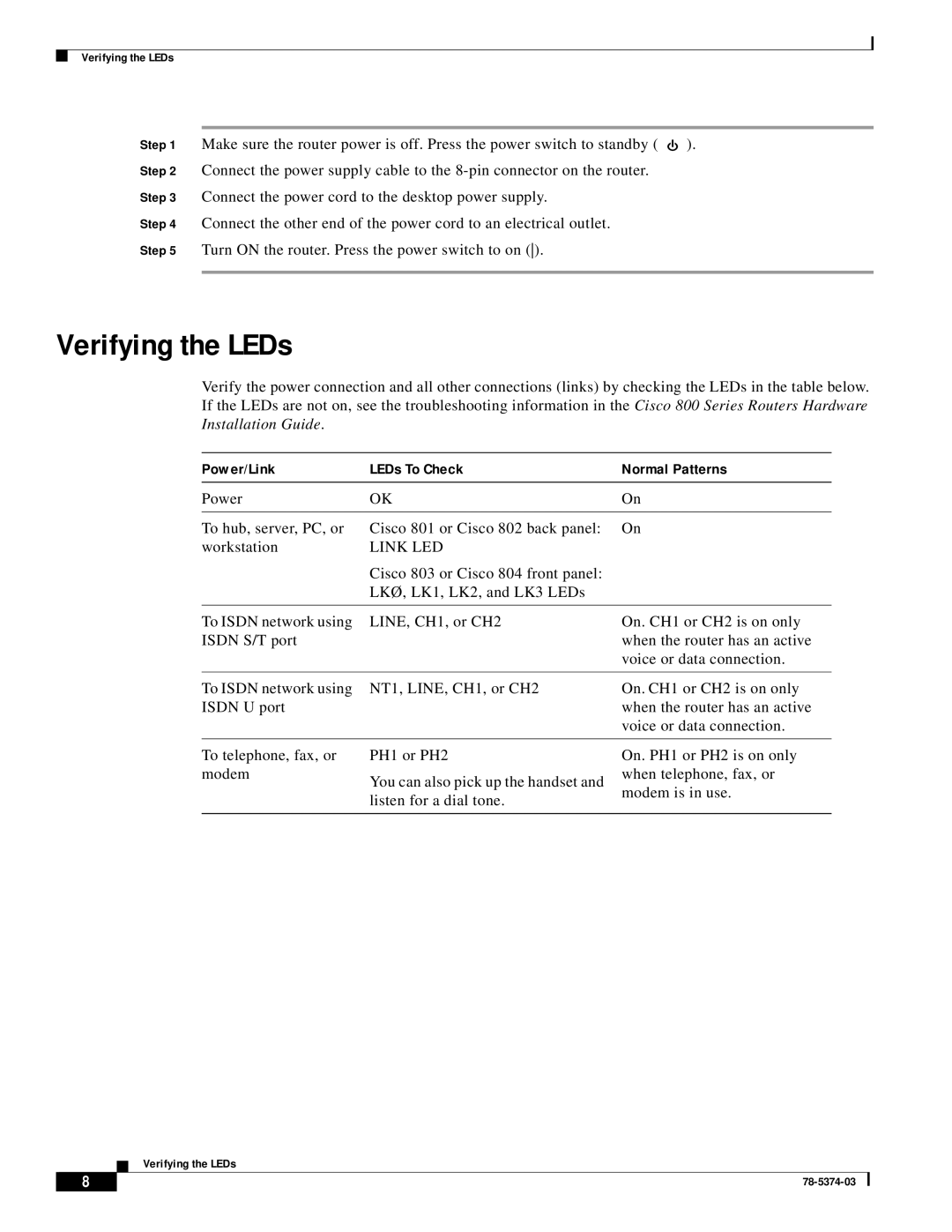2800 Series specifications
The Cisco Systems 2800 Series routers represent a significant advancement in integrated services router technology, offering a blend of voice, security, and data capabilities. Designed for small to medium-sized businesses as well as enterprise branch office environments, these routers deliver reliable performance while enabling seamless connectivity for various applications.One of the standout features of the 2800 Series is its modular design. This allows organizations to customize their networks according to specific needs. The router supports a variety of interface cards, helping to accommodate different WAN technologies like T1/E1, DSL, or fiber, ensures versatility in adapting to evolving business demands.
In terms of performance, the Cisco 2800 Series offers high throughput and can handle increasing amounts of network traffic without compromising on speed. It integrates advanced routing capabilities such as Border Gateway Protocol (BGP), Open Shortest Path First (OSPF), and Enhanced Interior Gateway Routing Protocol (EIGRP), enabling efficient communication and dynamic routing within the network.
Security is another critical component of the 2800 Series. The routers come with built-in features such as firewall protection, Virtual Private Network (VPN) support, and intrusion prevention systems. These capabilities enhance the security posture of an organization and protect sensitive data from unauthorized access.
Additionally, the 2800 Series includes robust QoS (Quality of Service) functionalities. This ensures that voice and video applications receive priority over less critical traffic, which is essential for maintaining the quality of real-time communications. The ability to manage bandwidth effectively is crucial for businesses that rely on VoIP, video conferencing, and other bandwidth-intensive applications.
The Cisco 2800 Series supports various protocols, including IPv4 and IPv6, thus future-proofing investments and accommodating the gradual shift towards newer networking standards. With enhancements in Power over Ethernet (PoE) capabilities, the routers can directly power supported devices such as IP phones or wireless access points, streamlining installation and reducing the need for additional electrical infrastructure.
In conclusion, the Cisco 2800 Series routers are designed to meet the growing needs of modern businesses. Their modular design, robust security features, advanced routing capabilities, and effective QoS make them a preferred choice for organizations looking to enhance their network efficiency, reliability, and performance. This series continues to be a cornerstone in networking solutions for businesses aiming to future-proof their communications infrastructure.

